Visit these 5 Sydney National Parks by Public Transport
Fancy a day in nature but you don’t have a car? These five Sydney National Parks Sydney that we are going to share with you below can be reached by public transport, making them perfect for visitors. Today we’ll help you discover the highlights of the green heart of Sydney, where you can trade the city skyline for a canopy of gum trees and the urban noise for the serene soundtrack of the bush.
So whether you’re a seasoned bushwalker, a picnic enthusiast, a wildlife lover, or simply seeking an escape from the concrete maze grab your Opal card, pack your adventurous spirit, and let’s go find Sydney’s Wildside!
I have listed the parks in order of how easy they are to get to, especially for those visiting without a car.
This page contains affiliate links. You can find our full disclosure policy here.
Sydney Harbour National Park
Sydney Harbour National Park stretches across the harbour, encompassing sections on both the northern and eastern sides of the city. It is home to several spectacular walks that run along the Harbour foreshore.
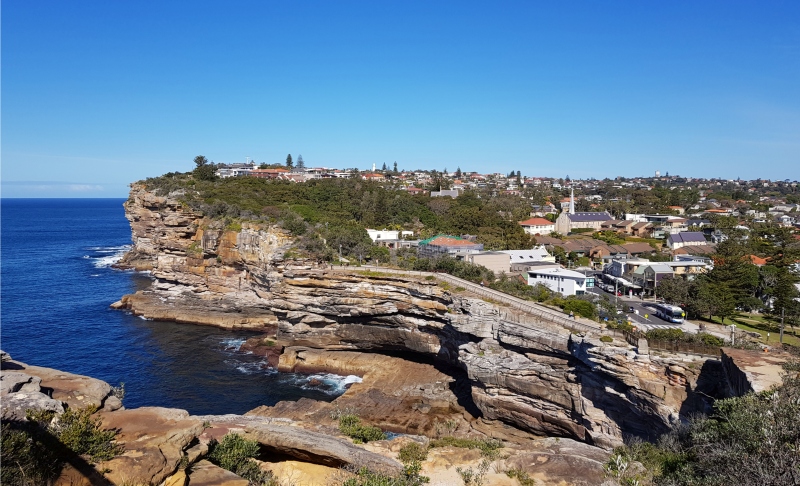
While you’re here, I highly recommend setting aside some time to experience at least one of these gorgeous walks. The landscapes you’ll encounter are the stuff of every photographer’s dreams, and a few hours spent here can help offset a day of indulging in Sydney’s dining delights.
Most of the walks would rate as easy to moderate, from a 1/2 hour stroll along Hermitage Foreshore walk in the eastern suburbs to the rewarding yet demanding four-hour trek from the Spit Bridge to Manly, there is a track to suit your time and fitness levels.
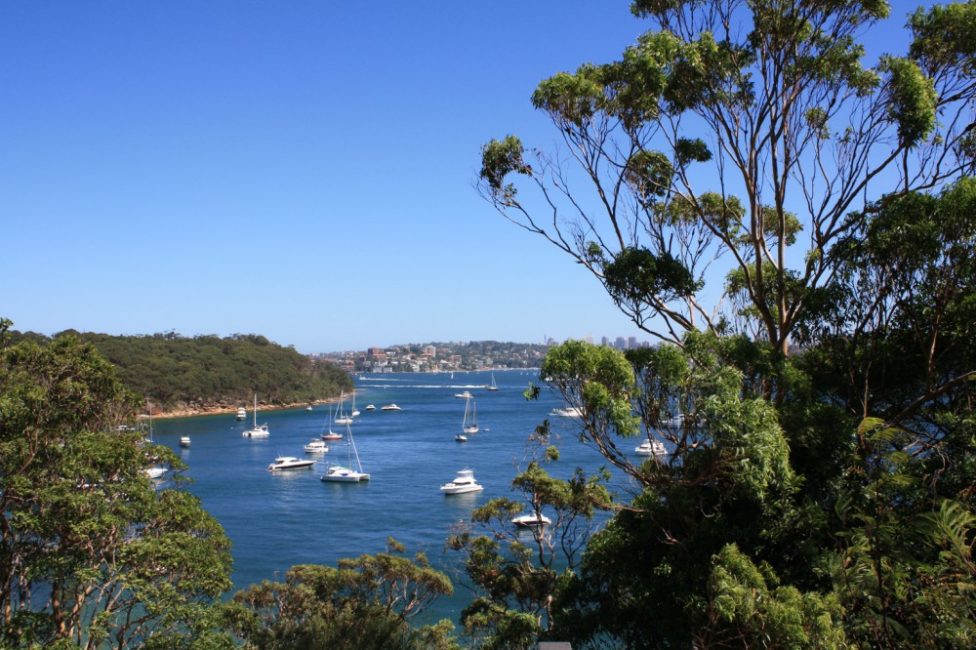
Which Sydney Harbour National Park walk should you do?
Now, the question arises: which walk should you take?
There is something for everyone here. My quick picks depending on your time and ability would be:
- For families, small children and those with limited mobility – The Fairfax Walk at North Head is a great choice. This 750m walk is partially wheelchair accessible and is a great vantage point for whale watching (June-Oct)
- If you are short of time – Bradley’s Head to Chowder Bay. There is a free audio tour too. (Apple and Android)
- The South Heritage Trail out to Hornby Lookout is also a favourite. This Watson’s Bay walk is easy to do and offers a fantastic harbour view.
- The Hermitage Foreshore walk is one many local Sydneysiders have not discovered. It’s hardly ever busy and has plenty of shade and beaches along the way to cool down.
- Lots of energy? Then try to Spit Bridge to Manly track – you can attempt it all or walk some of the 10 km. The 270° view from Dobrody Head alone is worth the effort.
Check out our harbour walks guide for hours of fun!
Kamay Botany Bay National Park
Kamay Botany Bay National Park is an important place in our history, where Captain James Cook landed in 1770, marking the beginning of Britain’s interest in Australia and its future colonization.
Split by the waters of Botany Bay, the park encompasses two sites — the Kurnell Peninsula, where Captain Cook’s landing place is marked by a monument; and the La Perouse area, named after the French explorer Comte de La Pérouse, on the northern headland of Botany Bay.
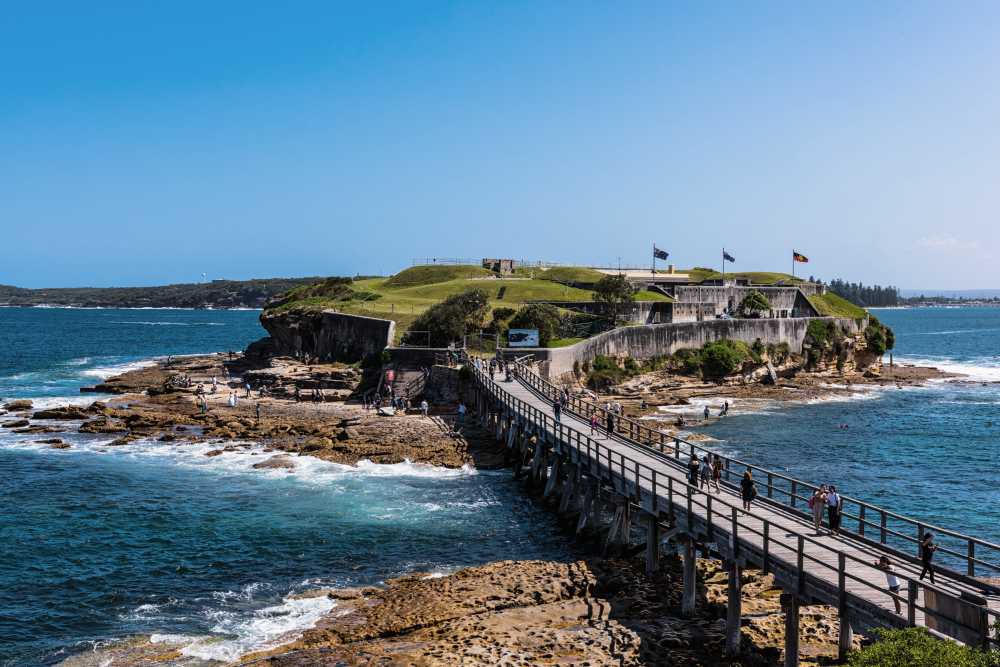
La Perouse, a French explorer, arrived in 1788 a few days after the ships of the First Fleet landed. He spent six weeks in the northern area, and this part of this Park is named for him.
La Perouse arrived in Botany Bay just 4 days after the First Fleet – the city could have had an entirely different future!
The park has significant Aboriginal history and features over 30 Aboriginal sites. Aboriginal discovery tours are regularly offered.
While both parts of the park can be reached by public transport the northern section near La Perouse is the easiest to get to with bus services from the city taking about 45 minutes.
What to see at La Perouse
Highlights in this section of the park at La Perouse include:
- Bare Island: This historic military fort and tunnels, constructed in 1885, are connected to the mainland by a footbridge. It’s an iconic Sydney landmark and a popular location for guided tours, snorkeling, and scuba diving due to the diverse marine life in the surrounding waters. It was also a filming location for a sequence in “Mission: Impossible 2”. Tours are available on Sunday but must be booked.
- La Perouse Museum and Visitors Centre: Here you can learn about the area’s history, including the story of the French explorer Comte de La Perouse, after whom the area is named. (Wed, & Fri-Sun)
- Aboriginal Heritage: The Guriwal Aboriginal Bush Tucker Track and the Yena Track are easy tracks that provide insights into the area’s original inhabitants, the Gweagal and Kameygal clans. They are signposted with information on the use of local plants for food, medicine, and tools.
- Henry Head and Cape Banks walking tracks: These tracks provide stunning views of the coastline. They’re great for birdwatching, and whale watching during migration season.
- Congwong Beach: A beautiful, calm bay beach perfect for swimming, picnicking and relaxing. Nearby is also the more secluded Little Congwong Beach, which is a well-known nude beach although it is not officially recognised as such.
La Perouse offers a safe family beach, Frenchman’s Beach on the sheltered Yarra Bay where you will also find several restaurants; check out Bare Grill for a great burger or the Boatshed La Perouse for a relaxing lunch.
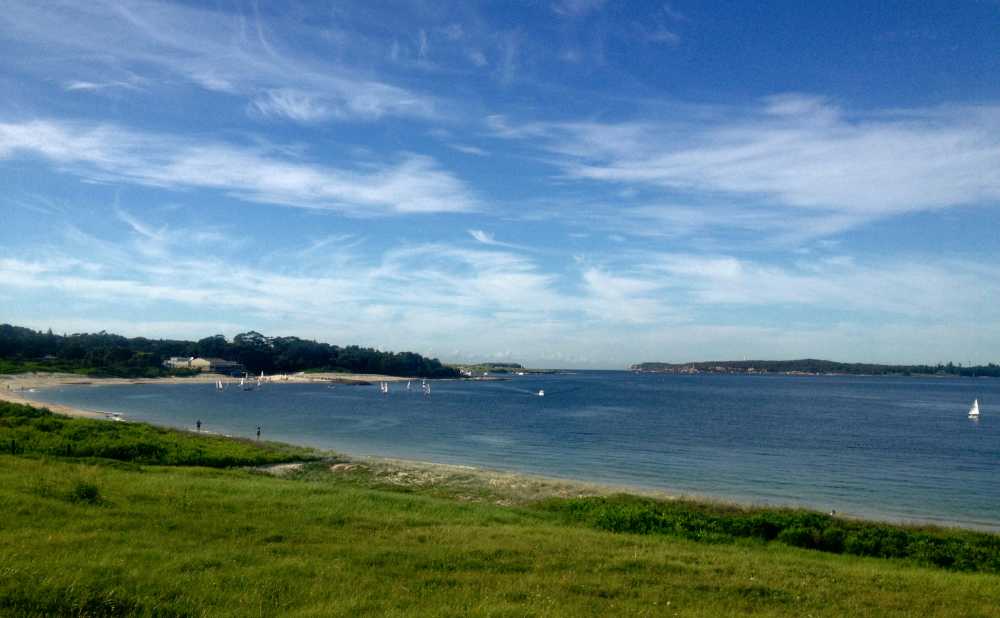
Kamay Botany Bay – Kurnell
Captain James Cook first stepped ashore at Kurnell on the park’s southern side in 1770, claiming Australia for Great Britain.
Along with the significant colonial and indigenous sites, this section of the park is a popular whale-watching site
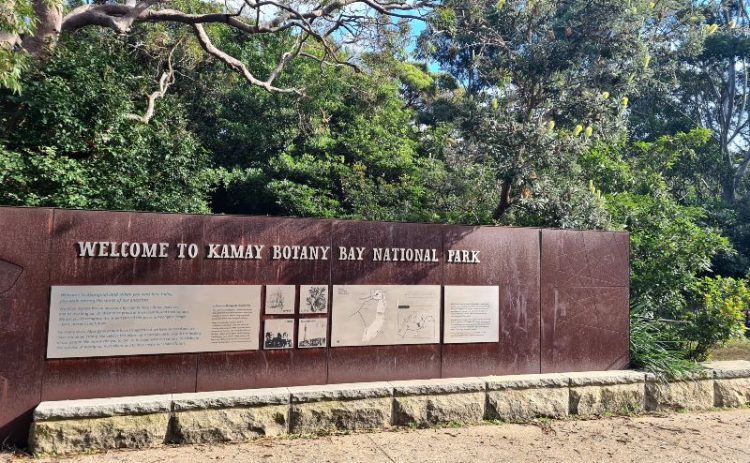
What to see at Kurnell
- Captain Cook’s Landing Place: This is the historical site where Lieutenant James Cook landed on 29 April 1770, marking the first contact between Aboriginal people and European explorers. A plaque marks the spot of his landing.
- Monument Track: A walking track that takes you past several monuments and plaques, including a monument to Captain Cook. It provides a good overview of the history of the area.
- Visitor Centre: Located in the park’s Kurnell area, the visitor centre offers interpretive displays of the area’s cultural and natural history, including the first contact between the Aboriginal people and the crew of the HMS Endeavour.
- The Meeting Place: An area that includes several outdoor sculptures and installations representing the Aboriginal and European perspectives on the landing of the Endeavour.
- Muru and Yena tracks: These tracks offer wonderful scenic views and take you past several significant cultural and historical sites. They’re also great for birdwatching.
- Cape Solander: Named after naturalist Daniel Solander, this spot is one of Sydney’s best whale-watching areas. A lookout has been established here, which provides panoramic views of the ocean and the migration path of whales between May and November.
- Cape Baily Lighthouse: Located on the coastal walking track, this lighthouse offers spectacular views of the coastline and the Pacific Ocean.
- Banks-Solander track: A short track (1 km return) where you can see some of the native plants first documented by Cook’s botanists, Joseph Banks and Daniel Solander.
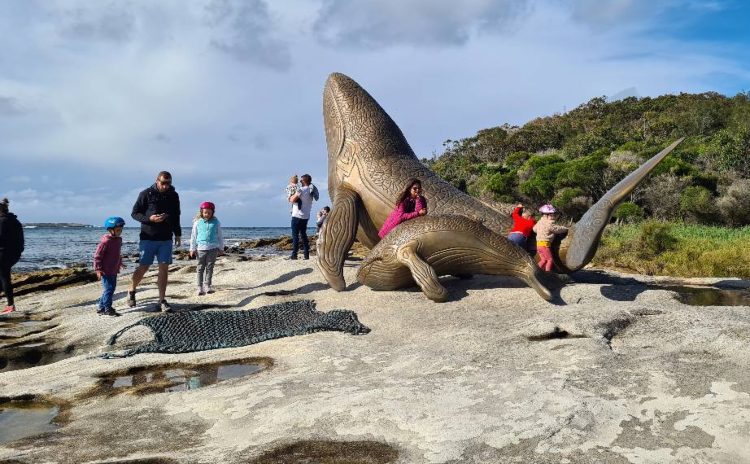
Getting to the Kamay National Park
La Perouse – Take the 390X from Bondi Junction or from Circular Quay, catch the light rail or the 396 to South Sydney Juniors and change to the 390X there.
Kurnell – Take the train from the Town Hall or Central to Cronulla and then join a local bus service 987
Royal National Park
A little over an hour south of Sydney (32 km) is the Royal, the second oldest National Park in the world. The easiest way to the park without a car is to take the ferry from Cronulla to Bundeena.
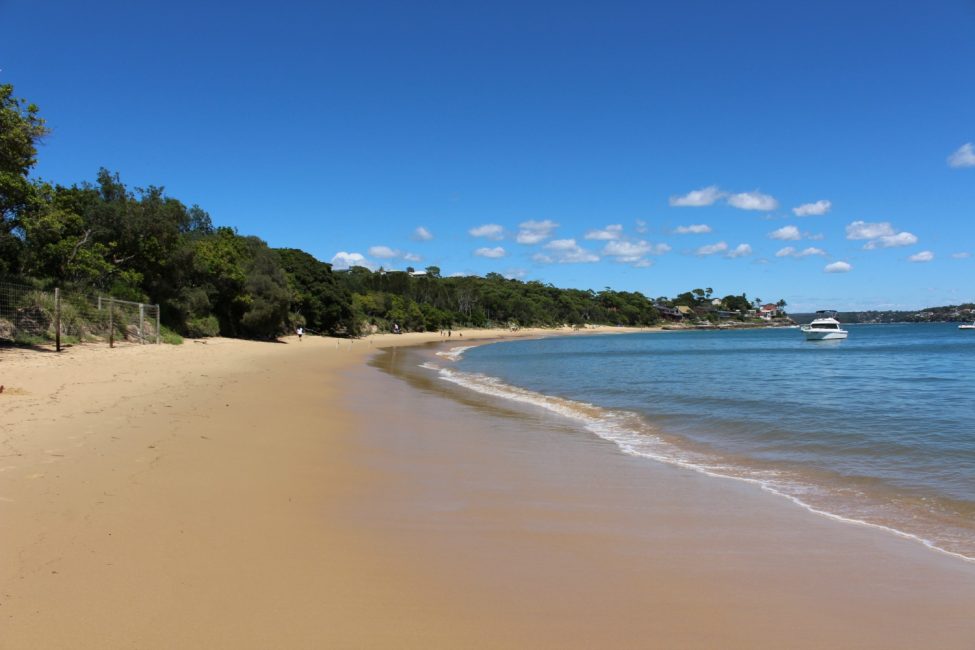
From Jibbon Beach, you have two options; you can explore aboriginal rock engravings at the point or choose the 7km circuit track that follows the coast and then heads inland for a short while on the way back to the ferry. We have shared a guide for exploring Bundeena here.

If you would like to do some hiking Royal National Park offers plenty of great walks from a few km to an overnight hike. There are also some great tour operators running day walks, like this guided hike by Sydney Nimble Tours if you prefer a guide to show you around.
There is also a fabulous small group South Coast day trip if you don’t have a car but would like to experience the park and surrounding coastline.
If you have a car, I recommend visiting Wattamolla, a beautiful and quiet beach (on weekdays), and the Royal National Park Visitor’s Centre at Audley. The Royal National Park also has its own waterfall, Curracurrong Falls, making a great day out.
Lane Cove National Park
Nestled within metropolitan Sydney less than 15km from the centre of the city, Lane Cove National Park is a tranquil oasis spanning 372 hectares across the suburbs of Lindfield, Chatswood, and Pennant Hills.
Its centrepiece is the meandering Lane Cove River which offers perfect riverside picnics spots for a fun kayaking and paddling adventure.
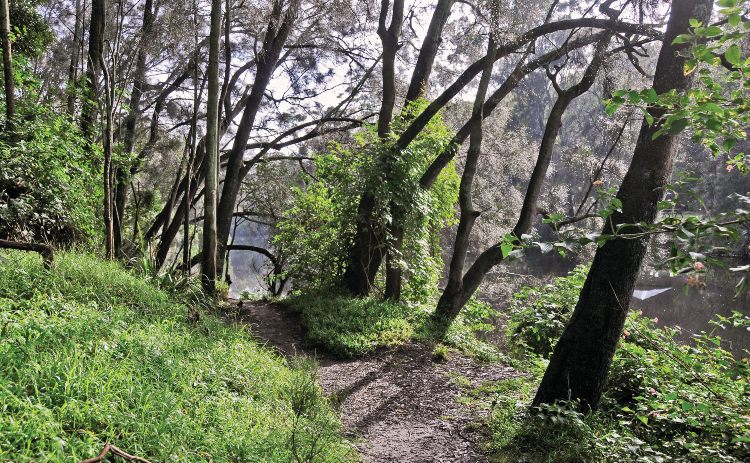
Highlights of Lane Cove National Park include strolling one of its tracks.
- Riverside Walk: This trail follows the beautiful Lane Cove River and provides opportunities for wildlife viewing.
- Great North Walk: A significant section of this famous long-distance walking track passes through the park, offering a more challenging hike.
- Scribbly Gum Track: This is a wonderful short walk where you can see characteristic scribbles on eucalyptus trees made by scribbly gum moth larvae.
There are also a number of cycling tracks in the park if you prefer to explore on two wheels.
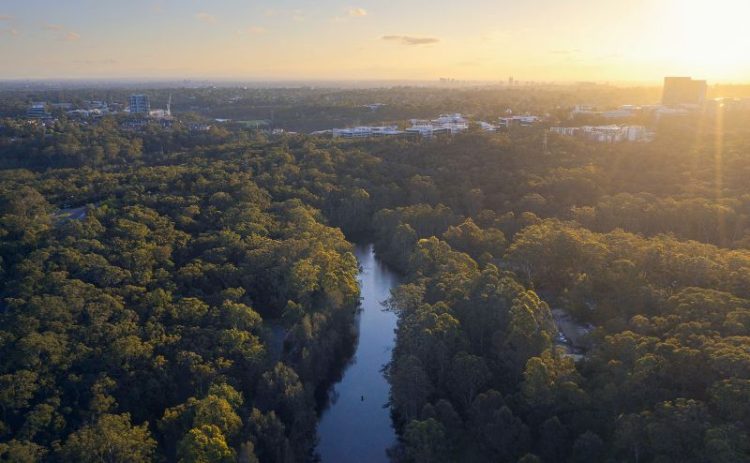
Most people head to the park to visit one of the many picnic spots, there are lots of good facilities here.
Check out one of these for your next lunch in the sun:
- Jenkins Hill Picnic Area: A great spot for a picnic with barbecue facilities, picnic tables, and access to walking tracks. You can also rent a boat and explore the river.
- Fiddens Wharf Oval: A lovely spot for picnics and playing sports, located close to the Fiddens Wharf walking track.
- Lane Cove Weir: This is the historic site where the freshwater of the Lane Cove River meets the tidal saltwater coming up from the harbour.
- Bakers Flat Picnic Area: Another excellent picnic spot, it is tranquil and offers plenty of shade.
- Haynes Flat Picnic Area: This picnic spot is ideal for families, with a playground nearby.
- Carter Creek Picnic Area: A peaceful spot with plenty of shade and nearby walking tracks.
Getting to Lane Cove National Park by public transport
Lane Cove National Park is accessible from North Ryde Station and by bus from Chatswood Station.
Ku Ring Gai Chase National Park
Ku Ring Gai is the second oldest NP in Australia (1894) and is the perfect choice if you want to get away from it all feeling without going too far from the city. While it is only 25km from the CBD, getting to this park without a car is not easy but it is possible!
Looking out over Pittwater and Broken Bay almost all the walking tracks offer breathtaking views and there are a couple of lovely hidden beaches.
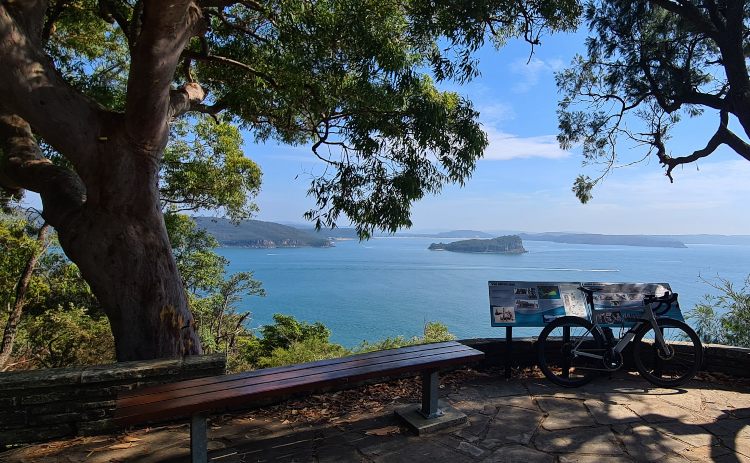
The park is known for its rich indigenous natural history with over 800 Aboriginal sites recorded to date.
Aboriginal sites we recommend you try to see at Kur-ring-gai National Park include:
- Red Hands Cave: On the Red Hands Cave walking track, this small rock shelter features hand stencil rock art made by the park’s traditional owners, the Guringai people. It’s an easy 1km return walk to the cave.
- The Basin Aboriginal Art Site: This site, best accessed by ferry from Palm Beach, includes a large rock platform with over 100 Aboriginal engravings, providing evidence of the area’s occupation by the Guringai people.
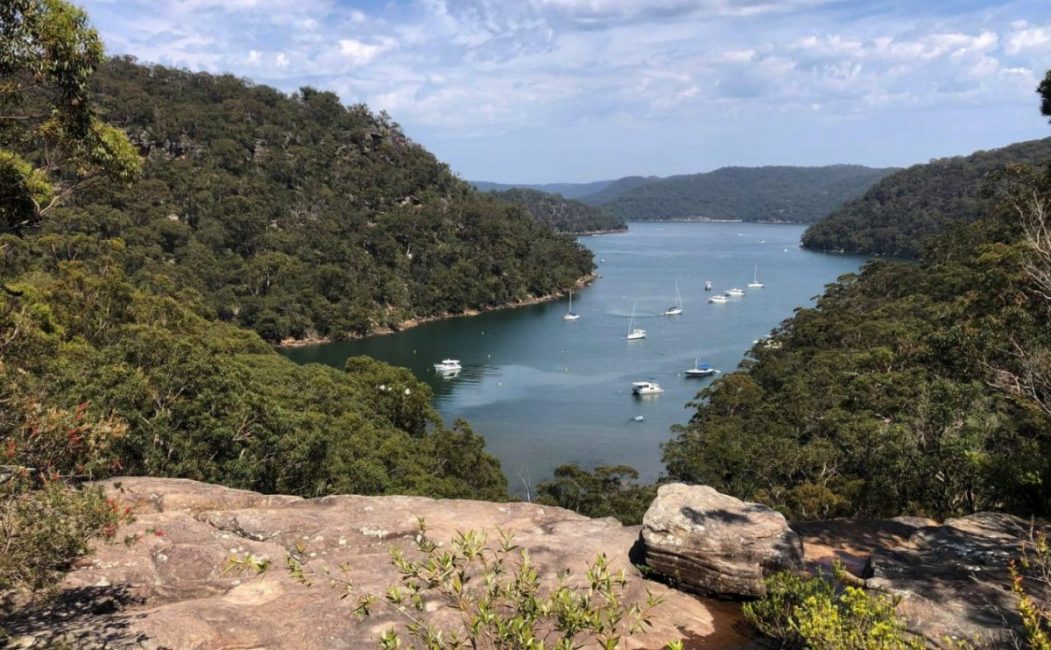
Add one or more of these walks:
- America Bay Track: This short walk will get your heart pumping but it rewards with a beautiful lookout and even a small waterfall. It’s only a 1.8km return and starts from West Head Road.
- Resolute Track Loop: This 6km track starts at West Head lookout, and includes Red Hands Cave, and several fantastic lookout points over Pittwater. You can detour to the small but pretty West Head and Resolute Beaches.
- Barrenjoey Lighthouse Walk: This short but steep walk takes you to the Barrenjoey Lighthouse at the tip of Barrenjoey Head. From the top, you’ll get panoramic views of Palm Beach, Pittwater, and the Central Coast. The walk is a 2.3km return.
- Bobbin Head Track: Starting from the Sphinx Memorial, this track takes you through beautiful bushland and along Cowan Creek, offering views of mangroves, a salt marsh, and casuarina woodland. It’s about a 10km loop track, and have lunch at Bobbin Head when you finish.
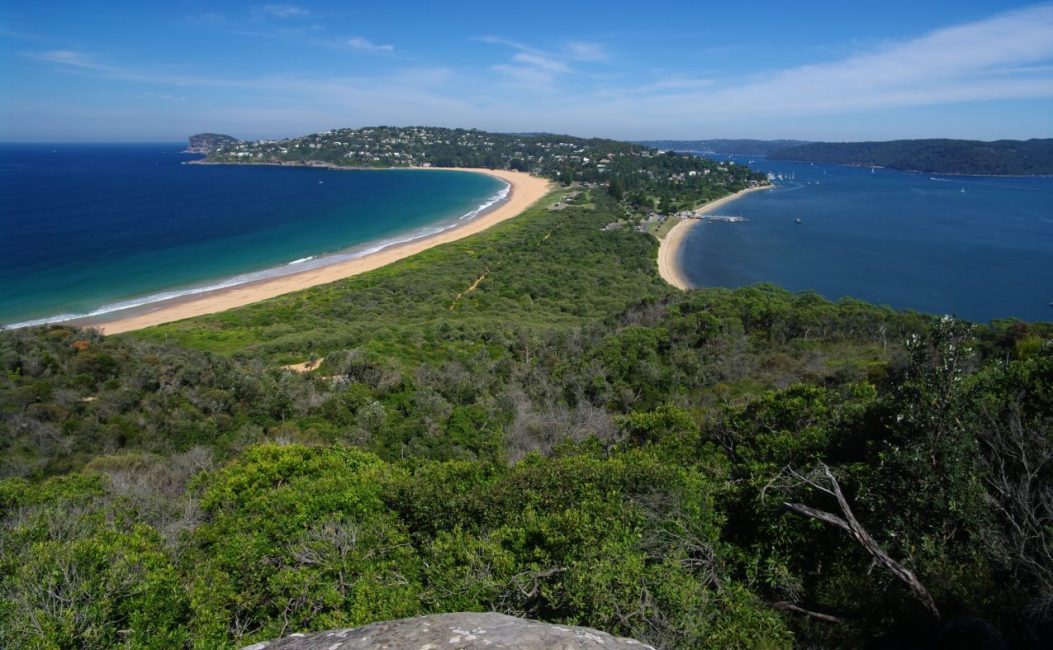
If you want to explore the hard-to-reach parts of this park then I highly recommend this seven-hour tour that will get you to places that would take hours without a car.
Getting to Kur-ring-gai Chase National Park
Barrenjoey Head Palm Beach – perhaps Barrenjoey Head at Palm Beach is the best spot to head to via public transport (L90 bus).
Bobbin Head – You can take a ferry from Palm Beach to Bobbin Head sometimes. You can also take the train to Turramurra and then jump on a local bus that will get you close to the park. I would jump in a ride share from the station.
To visit other parts of the park without a car is possible with some planning and determination, but if you have a friend with a car, I suggest you shout them lunch in return for a ride.
Please note: West Head Lookout is closed for major works until November 2023. Check here for updates.
Have you visited any of these Sydney National Parks? If you are looking for parks, you can take your dog to check our guide to the best parks in Sydney which includes dog-friendly options.
Have questions about things to see and do in Sydney?
Head over and join our Facebook Group and we will be happy to help.

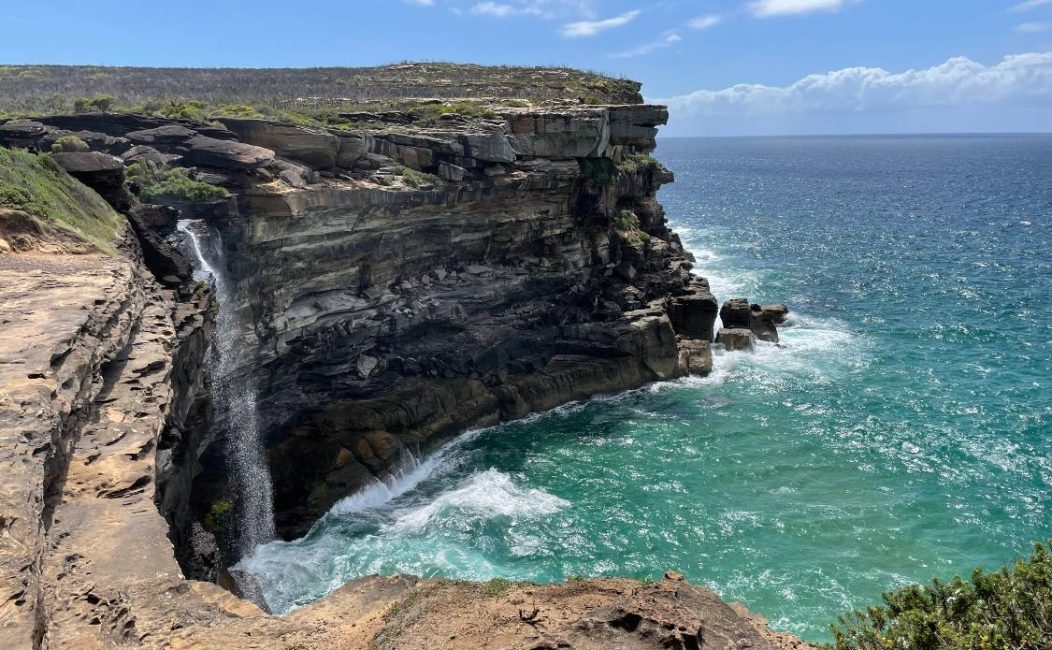
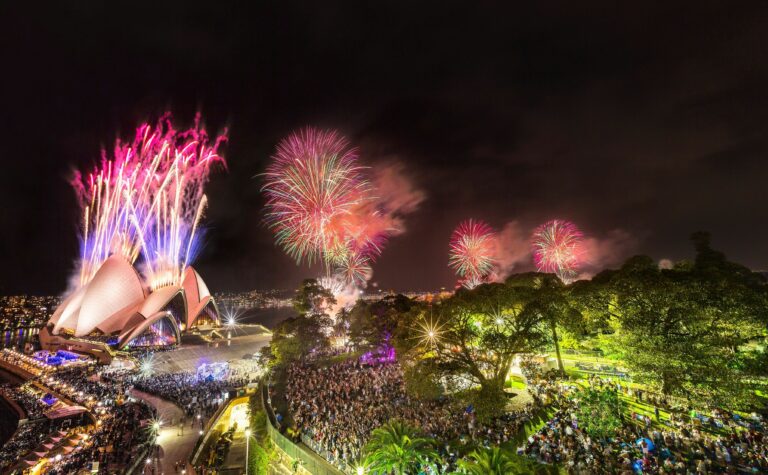
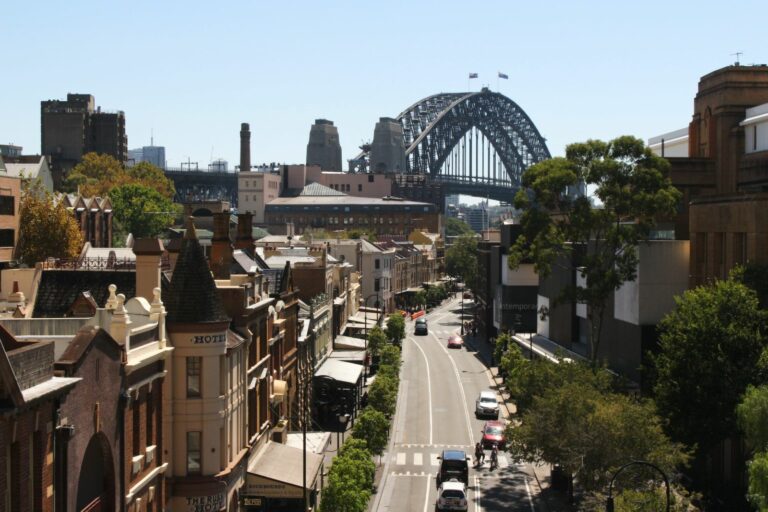
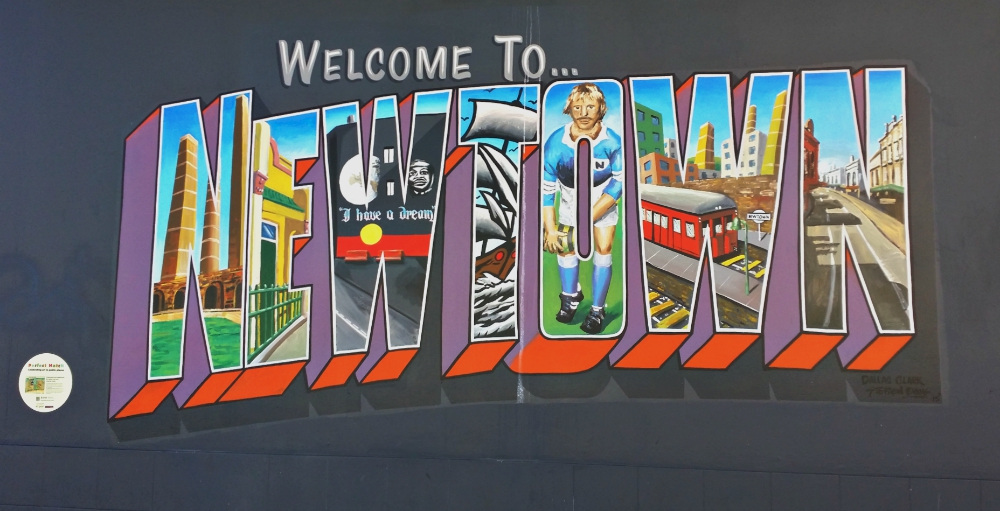
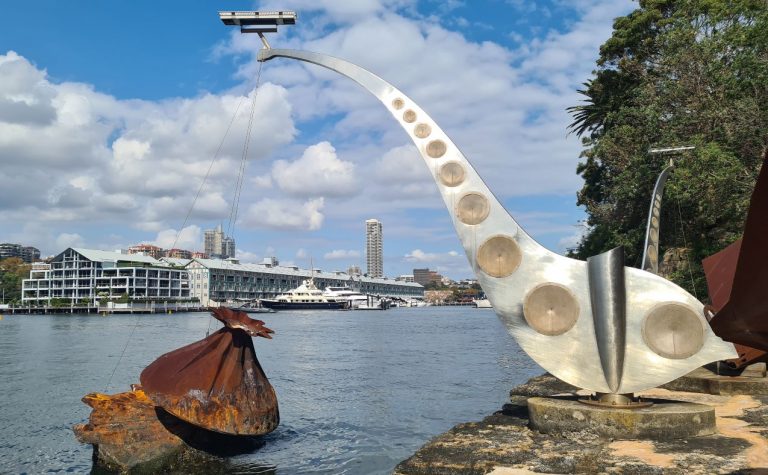
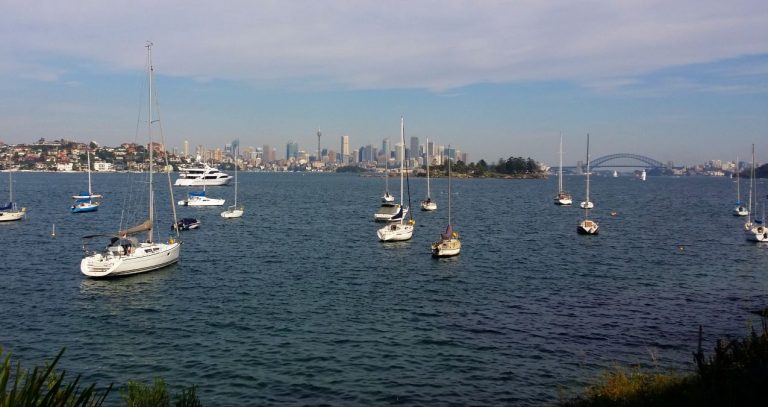
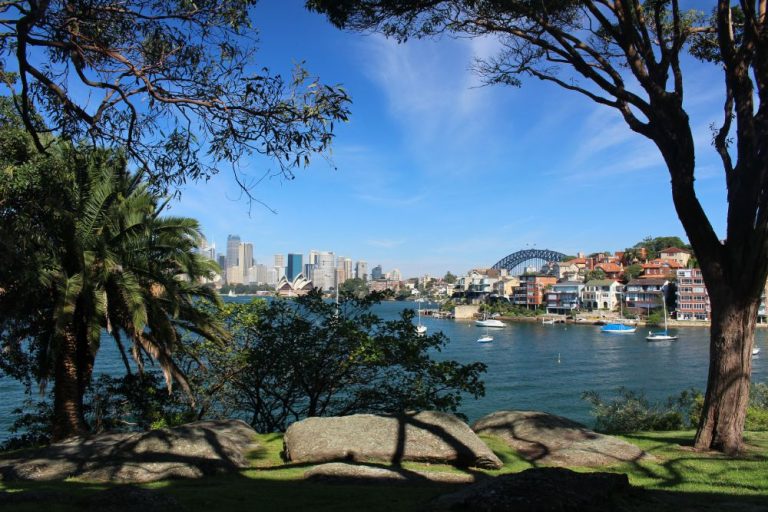
Great picks! I will try to visit some of these in my upcoming trip. Thanks.
We have been through the royal national park from Wollongong to Sydney before from memory its an amazing drive. I have not been to the other 2 you mentioned but they look great and will certainly put them on our list for next trip up north to Australia’s 2nd best city lol
I remember visiting a couple of these when I lived in Sydney, mainly Ku Ring Gai Chase National Park because I wanted to go to Palm Beach 🙂 I wish I’d visited the rest though, they all look beautiful!
Thanks Mark. I will have to check your tips next time I am in Qld.
I have spent most of my time in the Royal so really want to do more exploring of Ku Ring Gai but you are right, they are all beautiful!
These all sound amazing and I’d love to explore them. I’ll be in Sydney in 2 weeks for the first time. Can’t wait!
I hope you get to visit a couple Alyssa. Let me know via twitter if you have any questions while you are here and have a GREAT time!
I love NPs, actually I am writing this comment from a NP right now!
🙂 Excellent. Which one?
“Captain James Cook first stepped ashore at Kurnell on the park’s southern side in 1770, claiming Australia for Great Britain.” The Mabo decision overturned terra nullius, but despite that this will ALWAYS be Aboriginal Country. Always was, Always will be.
Absolutely – Thanks for reminding us that this article could do with a bit of a rework.